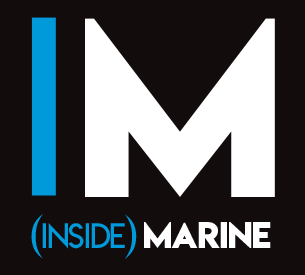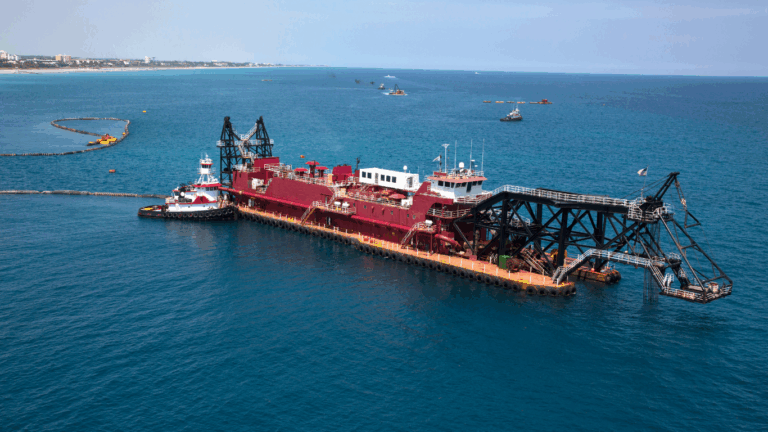Manchester (UK) based Process Flow Intelligence (PFI) is a world leader in non-nuclear density measurement technology with an ever-growing list of installations throughout the global dredging industry and will be exhibiting at EUROPORT 2025.
Interested observers may well be aware that PFI is a dredging and mining industry focused spin-out of Industrial Tomography Systems (ITS) – a sister organisation whose remit is still to focus on industrial and academic applications of electrical tomography.
2025 has been an especially exciting year for PFI with the launch of the i-Flow Density Meter. More than just a device to measure slurry density, the i-Flow is a 3-in-1 production smart meter that can also measure slurry/solid velocity and slurry bed-height.
The combination of these three metrics provides a dredge operator with vital operational and production output information instantaneously and is set to be a dredging industry game-changer for the global dredging industry.
How does it work?
PFI’s i-Flow Density Meter uses electrical resistance tomography (ERT). ERT works by measuring the relative difference in the electrical conductivity of water and the entrained solids inside the slurry pipe.
Sensor-derived conductivity measurements are interpreted by back-projected software to render a tomogram – a real-time dynamic cross-sectional image of the contents of the slurry pipe along with empirical and Cartesian representations of the same data.
Why non-nuclear?
While it has been the traditional ‘go-to’ technology for the dredging industry around the world, nuclear (or gamma) technology is now considered to be less attractive on a number of fronts. Issues regarding safety, high operational costs, high disposal costs, requirements for specialised training, onerous regulatory oversight, and other associated ‘red-tape’ that invariably arise from using such a potentially hazardous radioactive technology are all providing reasons to find non-nuclear technology solutions.
Is ERT any good?
In 2021, Damen Shipyards Group conducted a study of eight different slurry density meter technologies (seven non-nuclear and one ‘low dose nuclear’) under the same trial conditions on board a hopper dredger.
The findings were clear as ERT scored a maximum five with ERT’s accuracy found to be ‘Excellent’. The nearest competitors were ultrasonic and kinetic/weighing technologies which scored four and three respectively, with accuracy assessments of ‘Good’ and ‘Reasonable’ respectively.
An important point to remember is when these trials were conducted in 2021 and used an ERT system that can be regarded as a prehistoric ancestor, in technological terms, to PFI’s new i-Flow Density Meter. While most of the other technologies tested have, arguably, minimal room for improvement, ERT’s amelioration had only just begun.
What makes the i-Flow Density Meter so good compared with other technologies?
Boasting a smaller and faster data acquisition unit through a new and improved chip set, the i-Flow Density Meter boasts data acquisition speeds of 600 FPS/Hz from a device that is 90% smaller than its 2021 predecessor.
The meter also has no moving parts. This means nothing gets worn out or needs replacing in the short-to-medium term so it’s safer to use and more durable. PFI’s sensors are made from hardwearing ceramics, polyurethane (PU), or polyoxymethylene (POM); while sensor flanges can be manufactured to fit any slurry pipeline from 100mm to 1200mm.
The i-Flow Density Meter is a smart 3-in-1 production meter that can measure slurry density, slurry/solid velocity, and slurry bed-height all from one integrated panoptical device. There is no need to arrive at a ‘Frankenstein’ solution; in other words, you don’t have to ‘mix-and-match’ different devices using different technologies to measure different operational parameters like density and velocity/flow rate.
The i-Flow also boasts a user-friendly modular interface that can be arranged and adapted according to the end-user’s personal preferences and combines digital tomograms, traditional analogue dredging instrument-like displays, and Cartesian representations of relevant operational data as required.
These are just a few of the operational and commercial advantages that the i-Flow Density Meter holds over rival technologies. More information can be found on the Process Flow Intelligence website.
PFI will be exhibiting at EUROPORT 2025 in Rotterdam between the 4-7 November and can be found on Booth 6512, for anyone looking to find out more about the i-Flow Density Meter.
You can read more of the latest from the world of Marine here.


